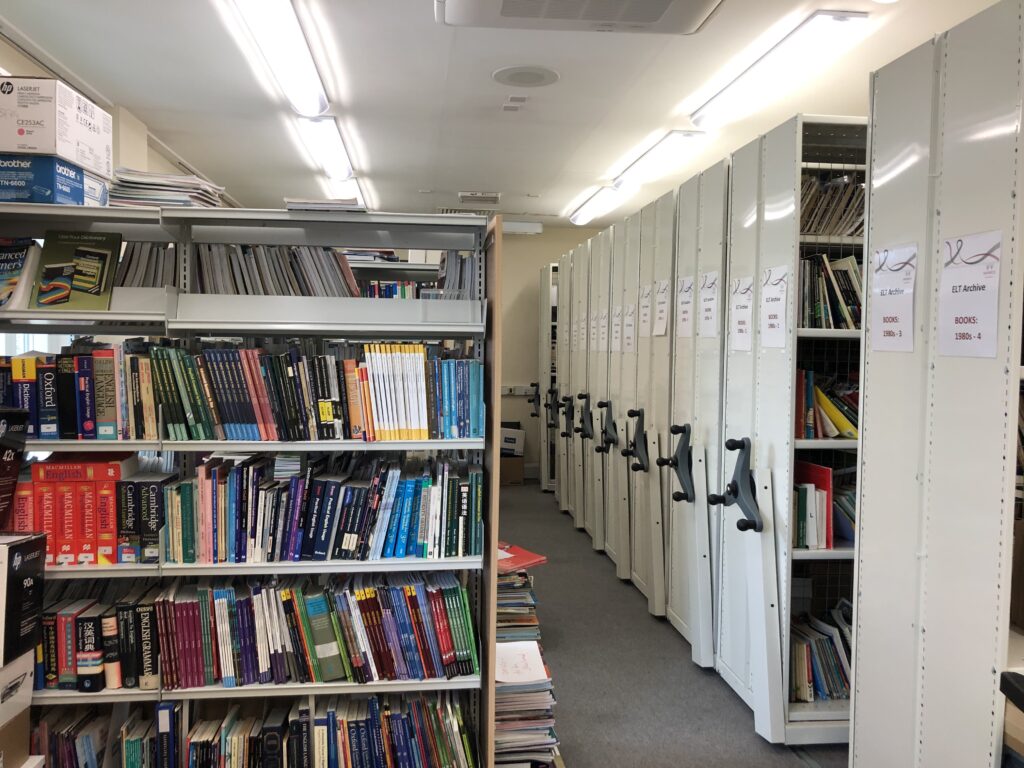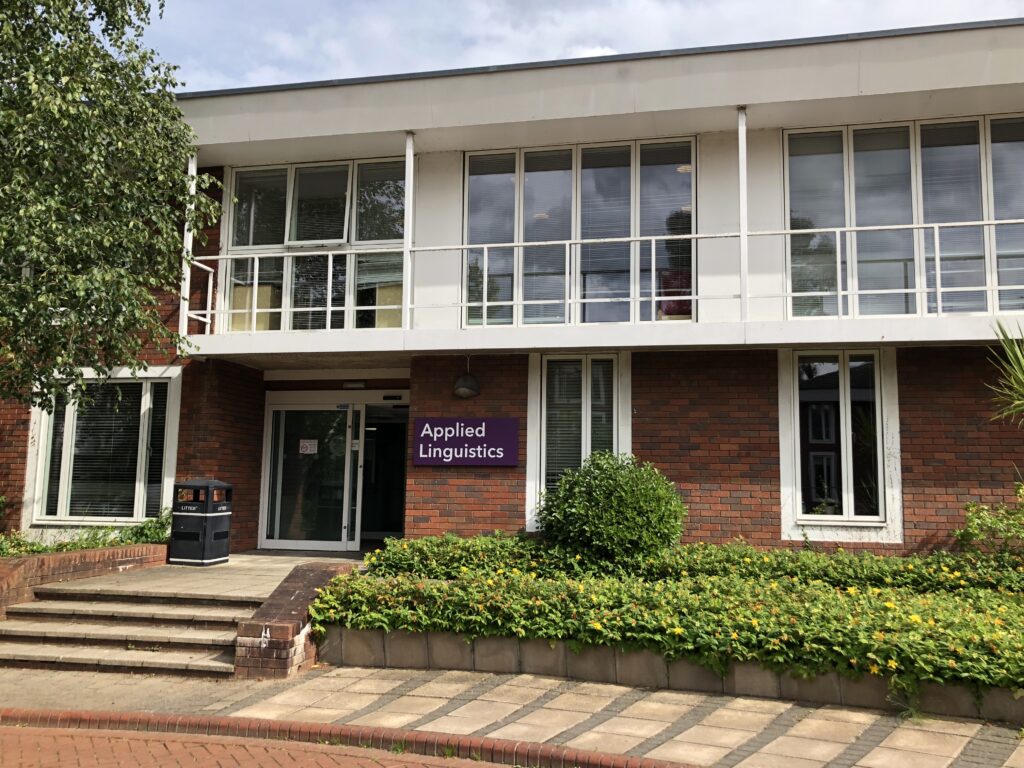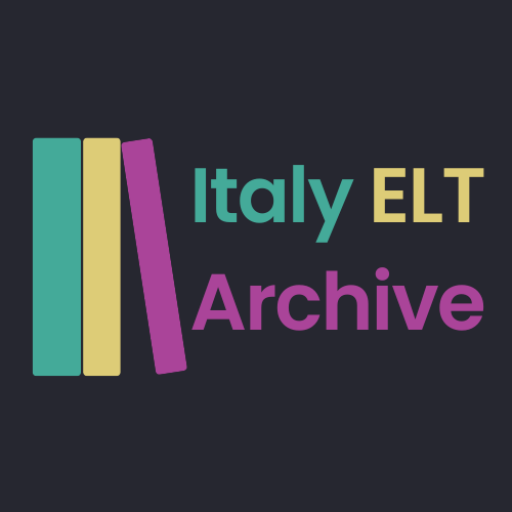Between 4 and 14 July 2024, Emanuela Tenca visited the Warwick ELT Archive thanks to a bursary awarded by the European Society for the Study of English (ESSE). The Warwick ELT Archive, created by Professor Richard Smith in the Department of Applied Linguistics, has been inspirational for the development of the Italy ELT Archive, and visiting it in person gave the opportunity to reflect on ways to advance the project underway in Milan and, above all, to liaise with Professor Smith and the other researchers in the Department.
Part of the research visit was dedicated to consulting selected items in the Archive (see below for a list of the documents sampled). Some of these are publications regarding the British Council, which help document its history in general, its presence in Italy between the 1930s and 1980s, and the role it played in encouraging research in the Italian context. Other items sampled deal with the Council of Europe and the contribution it made to the transformation of foreign language education in Europe in the second half of the 20th Century. Taken together, the sources regarding these two institutions help better understand the broader historical, socio-cultural, and pedagogical context surrounding the production of materials for English language education in 20th Century Italy, also from an international perspective.

The Warwick ELT Archive (photo credits: Emanuela Tenca)
Additionally, a number of sources related to the teaching of pronunciation were consulted, published in the first half of the 20th Century. These were designed to meet the needs of “foreigners”, to use a term which was common at the time to refer to international learners of English visiting Britain. These sources were selected to support a study which will be presented at a conference organised by the network Italian Studies at Oxford (ISO) on 9 November 2024. This study will show how the teaching of pronunciation was localised in Italy between the 1920s and the 1940s by comparing and contrasting materials specifically designed for Italian learners with materials published in Britain for a more heterogenous audience of learners.
Other activities carried out during the visit aimed to consolidate the relationship between the research team in Milan and the research team at the University of Warwick. To this end, Emanuela Tenca gave a talk during a meeting of the HoLLT.net Research Circle, with Professor Luciana Pedrazzini participating online, about the development of the Italy ELT Archive.

The Department of Applied Linguistics, University of Warwick, the seat of the Warwick ELT Archive (photo credits: Emanuela Tenca)
Emanuela Tenca also interviewed Professor Smith to find out more about the genesis of the Warwick ELT Archive, its present role for research into the history of ELT, and its future developments. Interesting points which were raised during the interview regarded the importance of materials production in investigating the history of ELT. To put it in Professor Smith’s words, textbooks “mediate between theory and practice”, as they are written by a variety of language professionals such as teachers and teacher trainers, and so “they may be reflecting the realities of teaching better than prescriptions” that can be derived from theoretical descriptions of teaching methodologies.
Another fundamental aspect that was discussed had to do with the role of publishers such as Oxford University Press and Longman (now part of Pearson) in exporting ELT around the world, especially between the 1950s and the 1960s. Many materials published at that time are now housed in the Warwick ELT Archive, and they represent how a British perspective on ELT was adopted globally in the 20th Century. Keeping that in mind, now there is a need to focus on materials production in local contexts by publishers and authors coming from those contexts, as is the case with the Italy ELT Archive and other similar projects conducted in Japan, Germany, India, to name a few. As Professor Smith emphasised, “each different context has its own history”, and so more research centres around the world should be established to investigate local materials production and determine how ELT methodologies have been adopted and adapted globally over time.
In the final part of the interview, Professor Smith talked about the future of the Warwick ELT Archive: one of the goals is to consolidate its online presence through its website, which will be enriched with digitised sources. This will make the Archive more accessible to a wider audience, thus serving as “an induction into historical research or doing history as part of teacher education”. Indeed, Professor Smith’s vision for the future is one of “distributed knowledge”, with many places like the Warwick ELT Archive where researchers will share their expertise and collaborate, also with a view to bringing the history of language learning and teaching closer to practitioners.
Texts and documents consulted at the Warwick ELT Archive (in alphabetical order)
Armstrong, L. E. (1946). An English Phonetic Reader. London: University of London Press.
British Council (1940). Outline of Activities. London: British Council.
British Council (c.1946). What is the British Council? London: British Council.
British Council (c.1947). The British Council: What it Is and What it Does. London: British Council.
British Council (1961). University Training and Research in the Use of English as a Second / Foreign Language. Conference held at Nutford House, London, 15-17 December 1960. Recommendations and Summary of the Five Sessions.
British Council and the English Teaching Information Centre – ETIC (1971-1973). ELT Documents 1971-1973. London: British Council.
Council of Europe & Council for Cultural Co-operation (1973). Systems Development in Adult Language Learning: A European Unit / Credit System for Modern Language Learning by Adults. Strasbourg, Council of Europe.
Craigie, W. A. (1921). The Pronunciation of English Reduced to Rules by Means of a System of Marks Applied to the Ordinary Spelling. Oxford: Clarendon Press.
Donaldson, F. (1984). The British Council. The First Fifty Years. London: Jonathan Cape.
Evans, E. M. (1939). Some Observations on the Teaching of the Spoken Word. London: University College London.
Harman, H. A. (1933). English Pronunciation Exercises: Words – Word-tunes. London: Longmans, Green.
Hill, D. & Holden, S. (eds.) (1988) Creativity in Language Teaching. The British Council 1988 Milan Conference. Modern English publications, in association with The British Council.
Hill, D. & Holden, S. (eds.) (1989) Effective Teaching and Learning. The British Council 1989 Milan Conference. Modern English publications, in association with The British Council.
Holden, S. (ed) (1991). Ten Years On. The Italian National Conferences. Modern English publications, in association with The British Council.
Palmer, H. E. (1922). Everyday Sentences in Spoken English. In Phonetic Transcription with Intonation Marks (For the use of Foreign Students). Cambridge: W. Heffer & Sons.
Palmer, H. E. (1923). Colloquial English. Part I. 100 Substitution tables. Cambridge: W. Heffer & Sons.
Palmer, H. E. & Blandford, F. G. (1928). English Pronunciation through Questions and Answers. Cambridge: W. Heffer & Sons.
Passy, P. & D. Jones (1912). The Principles of the International Phonetic Association. London: International Phonetic Association.
Rippmann, W. (1910). The Sounds of Spoken English: A Manual of Ear Training for English Students. London, Dent.
Tibbits, E. L. (1946). A Phonetic Reader for Foreign Learners of English. Cambridge: W. Heffer and Sons.
Trenité, G. N. (1932). Drop Your Foreign Accent. London, George Allen and Unwin.
van Ek, J. A. & Alexander, L. G. (1977). Waystage. Some Methodological Implications of Waystage and Threshold Level. Strasbourg: Council of Europe.
You can find the complete catalogue of the Warwick ELT Archive here.
The Warwick ELT Archive is a physical collection of published and unpublished sources documenting the history of ELT and applied linguistics between the 1880s and 1990s. As of 30 Sept. 2024, its catalogue comprises 4,672 items, including learning and teaching materials as well as other sources attesting to the historical, social, cultural, and pedagogical context within which those materials were designed and adopted. The sources in the Warwick ELT Archive mainly represent ELT materials production from a British (and to a lesser extent American) perspective, and therefore they tend to represent mainstream views on ELT approaches, which the Italy ELT Archive aims to challenge by focusing on the Italian context.
